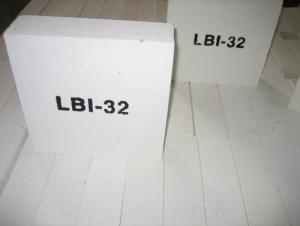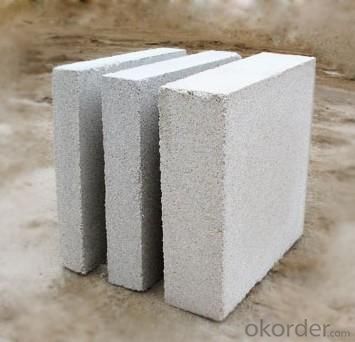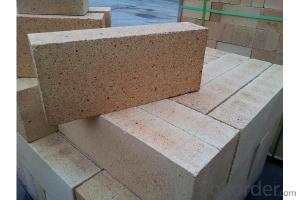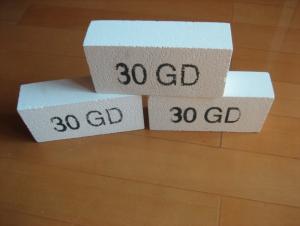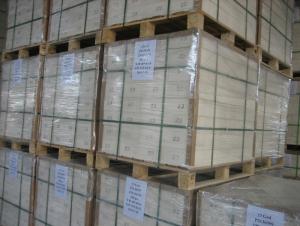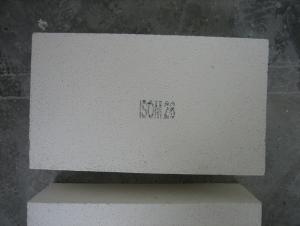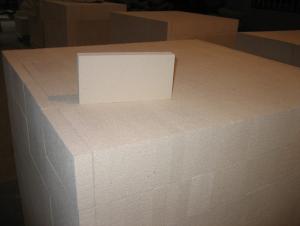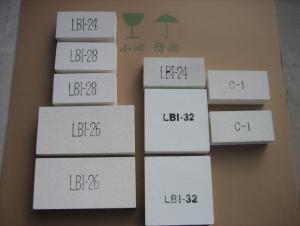Insulating Fire Brick - Refractory Mullite Insulating Refractory Brick JM 28
- Loading Port:
- Shanghai
- Payment Terms:
- TT OR LC
- Min Order Qty:
- 20 m.t.
- Supply Capability:
- 20 m.t./month
OKorder Service Pledge
OKorder Financial Service
You Might Also Like
General Information
CMAX insulating firebricks are classified under temperature between 1300℃ to 1700℃, manufactured from high purity alumina clay.
1. Lower content of iron, alkaline and impurities, good high temperature properties.
2. Homogeneous structure, light weight, energy saving because lower heat storage in the furnace during cooling cycles.
3. High strength, good thermal shock resistance under high temperature.
4. Precise sizes due to grinding and shaping after sintering, which meets the requirement of construction.
5. Max service temp: Up to 1730C (3160F)
Feature
Light weight and low thermal conductivity
Low heat storage
Low iron and impurities
High thermal shock resistance
Application of Insulating brick
Metallurgical Industry: blast furnace, hot blast furnace, heating furnace, etc..
Petrochemical Industry: ethylene cracking furnace, hydrogen furnace, the main furnace, heating furnace, etc..
Ceramic industry: roller kiln, kiln, etc..
Glass industry: glass furnace regenerator, etc.
Carbon industry: carbon furnace, etc..
Aluminum electrolysis industry: aluminum reduction cell, etc.
Other industries: tunnel kiln, shuttle kiln, etc.
Advantages of heat insulation brick
Low thermal conductivity: many air holes will bring good thermal insulation effect, energy saving.
High crushing strength: high crushing strength, volume stability.
Low heat storage: small heat storage, absorb more heat, energy-saving effect is obvious.
Technical Data
ITEM | GJM30 | GJM28 | GJM26 | GJM23 |
Classification Temperature, ℉/℃ | 3000/1650 | 2800/1540 | 2600/1430 | 2300/1260 |
Bulk Density,g/cm³ | ≤1.0 | ≤0.9 | ≤0.8 | ≥0.5 |
Reheating Linear Change, % | ≤0.9 (1550℃,12 h) | ≤0.8 (1510℃,12 h) | ≤0.7 (1410℃,12 h) | ≤0.5 (1230℃,12 h) |
Al2O3 Content, % | ≥75 | ≥65 | ≥55 | ≥45 |
Fe2O3 Content, % | ≤0.5 | ≤0.6 | ≤0.7 | ≤1.0 |
Thermal Conductivity: | ||||
800℃, w/m.k | ≤0.39 | ≤0.37 | ≤0.35 | ≤0.18 |
1000℃, w/m.k | ≤0.43 | ≤0.41 | ≤0.39 | ≤0.20 |
1200℃, w/m.k | ≤0.48 | ≤0.46 | ≤0.43 | --- |
Insulating brick
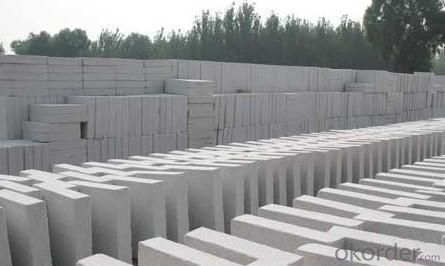
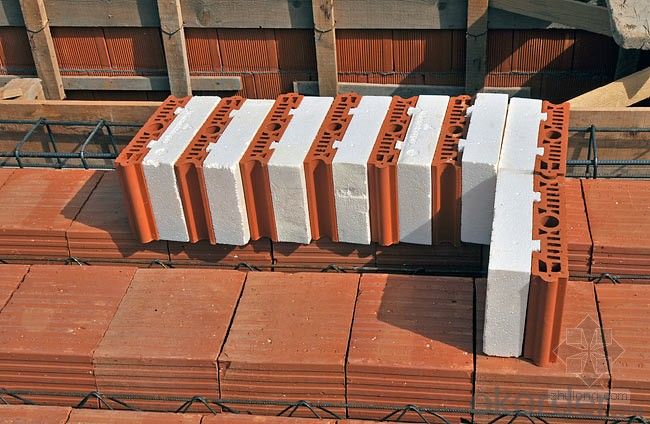
Common problem solution
1. What products do you have?
We have all kinds of refractory bricks, refractory casting materials, mortar, cement, ceramic fiber products, etc..
Or you can browse our products to choose what you need.
2. How to control product quality?
With strict quality control system throughout the material selection and production process, we have the quality of refractory materials and ceramic fiber products to meet customer requirements.
From the selection of raw materials, the quality of our control to start. The quality of the raw materials required for each batch of products in the use of the front line test. In the production process, through the quality control of workers, and then to each piece of classification, and through quality supervision and inspection.
3. Could you give me a brief introduction to the application of your product?
My Company is mainly engaged in steel, cement, glass, ceramics, petrochemical, electric power and other industries.
4. If I need you, what kind of information do you need?
In order to select the right products, we will provide us with information, such as the United States, technical data, order quantity, product applications, etc..
If you have any questions, please contact us.
- Q: Can insulating fire bricks be used in the construction of glassware production furnaces?
- Yes, insulating fire bricks can be used in the construction of glassware production furnaces. These bricks have excellent thermal insulation properties and can withstand high temperatures, making them ideal for creating a well-insulated and efficient furnace for glass production.
- Q: Are insulating fire bricks suitable for use in thermal power plants?
- Insulating fire bricks are indeed suitable for utilization in thermal power plants. By possessing low thermal conductivity, these bricks effectively retain heat and prevent its dissipation. In the context of thermal power plants, where elevated temperatures are generated, insulating fire bricks can be employed as linings for furnaces, boilers, and other apparatus to furnish thermal insulation and augment energy efficiency. Furthermore, these bricks exhibit resistance towards high temperatures and are capable of enduring thermal shocks, rendering them highly suitable for deployment in environments characterized by extreme heat. The utilization of insulating fire bricks in thermal power plants enables operators to curtail heat loss, enhance the overall efficiency of the plant, and bolster the durability and lifespan of the equipment.
- Q: Are insulating fire bricks resistant to flame impingement?
- Yes, insulating fire bricks are resistant to flame impingement.
- Q: Are insulating fire bricks suitable for use in boilers?
- Yes, insulating fire bricks are suitable for use in boilers. They have excellent thermal insulation properties, which help to minimize heat loss and increase energy efficiency in boilers. Additionally, their high temperature resistance ensures they can withstand the extreme heat generated within the boiler.
- Q: What is the typical lifespan of an insulating fire brick?
- The typical lifespan of an insulating fire brick can vary depending on several factors. These factors include the type and quality of the brick, the temperature and conditions it is exposed to, and the level of maintenance it receives. In general, insulating fire bricks are designed to withstand high temperatures and provide insulation in various industrial applications such as kilns, furnaces, and fireplaces. They are made from lightweight refractory materials that have good thermal insulation properties. With proper installation and regular maintenance, insulating fire bricks can last for many years. However, over time, exposure to extreme temperatures, thermal cycling, chemical corrosion, and mechanical stress can cause gradual wear and tear, leading to a decrease in their lifespan. On average, insulating fire bricks can typically last anywhere from 5 to 20 years. This range is quite broad due to the aforementioned factors. Bricks used in higher temperature applications or subjected to more severe conditions may have a shorter lifespan, while those in less demanding environments may last longer. To maximize the lifespan of insulating fire bricks, it is important to follow proper installation techniques, use bricks with the appropriate temperature rating for the application, and regularly inspect and maintain the bricks. This includes checking for cracks, erosion, or any signs of deterioration and promptly addressing any issues to prevent further damage. Overall, while there is no definite lifespan for insulating fire bricks, their longevity can be extended through proper care and maintenance, allowing them to provide effective insulation and serve their intended purpose for a significant period of time.
- Q: What is the typical porosity of an insulating fire brick?
- The typical porosity of an insulating fire brick varies depending on the specific type and composition of the brick. However, in general, insulating fire bricks have a porosity range of 40% to 70%. The porosity refers to the amount of open space or voids within the brick structure. These voids allow for the brick to have better thermal insulation properties by reducing heat transfer. The higher the porosity, the better the insulation capability of the brick. Manufacturers of insulating fire bricks often aim for a specific porosity range based on the desired thermal conductivity and insulation efficiency.
- Q: Can insulating fire bricks be used in brick kilns?
- Yes, insulating fire bricks can be used in brick kilns. They are specifically designed to withstand high temperatures and provide excellent insulation, making them suitable for use in brick kilns where heat retention is crucial.
- Q: Can insulating fire bricks be cut to size?
- Yes, insulating fire bricks can be cut to size. Insulating fire bricks are typically made from lightweight refractory materials, such as expanded clay or vermiculite, which makes them relatively easy to cut. They can be cut using common tools like saws or knives. It is important to note that when cutting insulating fire bricks, safety precautions should be taken, such as wearing protective goggles and a dust mask, as the cutting process may generate dust and small particles. Additionally, it is advisable to follow manufacturer's instructions or seek professional advice to ensure the proper technique and tools are used for cutting insulating fire bricks.
- Q: Do insulating fire bricks require any curing or drying time before use?
- Insulating fire bricks must undergo a curing or drying period prior to use. This is necessary because the bricks are manufactured using binders and additives that need to be cured or dried in order to ensure optimal performance and durability. Through the curing or drying process, these materials harden and solidify, thereby enhancing the insulation capabilities of the bricks. Neglecting to properly cure or dry the bricks before use can lead to decreased insulation efficiency and potential damage to the bricks when exposed to heat. To ensure the best results, it is advised to adhere to the manufacturer's instructions regarding the specific curing or drying time required for the insulating fire bricks.
- Q: Can insulating fire bricks be used in ladle covers?
- Insulating fire bricks can indeed be used in ladle covers. These bricks are specially designed to have low thermal conductivity, which means they can effectively insulate and retain heat. Ladle covers are used in foundries and other high-temperature industries to keep molten metal or other materials hot and prevent heat loss. By using insulating fire bricks in ladle covers, the heat is better retained, resulting in improved energy efficiency and reduced fuel consumption. Additionally, these bricks have high refractory properties, allowing them to withstand the extreme temperatures and thermal shock that ladles are subjected to. Overall, insulating fire bricks are an excellent choice for ladle covers, as they help to maintain temperature stability and conserve heat.
Send your message to us
Insulating Fire Brick - Refractory Mullite Insulating Refractory Brick JM 28
- Loading Port:
- Shanghai
- Payment Terms:
- TT OR LC
- Min Order Qty:
- 20 m.t.
- Supply Capability:
- 20 m.t./month
OKorder Service Pledge
OKorder Financial Service
Similar products
Hot products
Hot Searches
Related keywords
